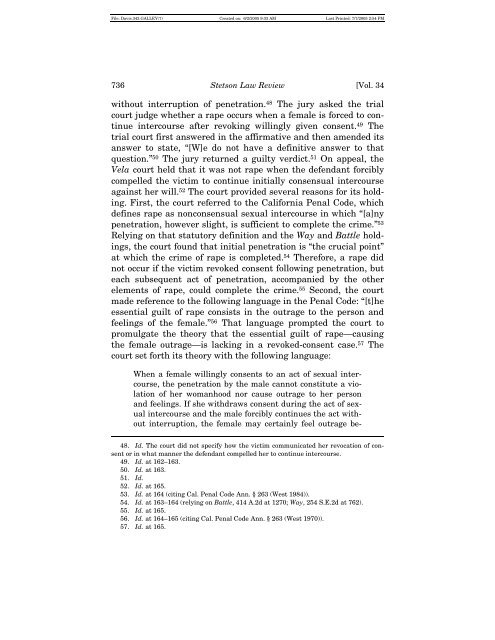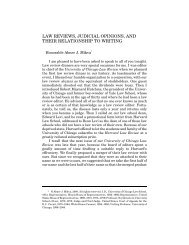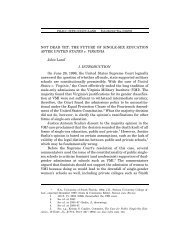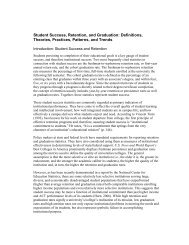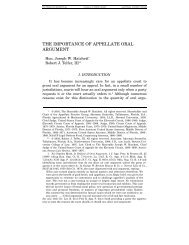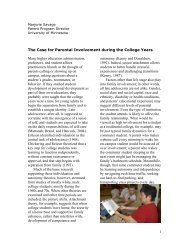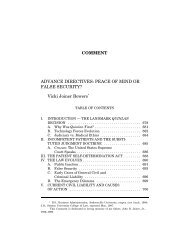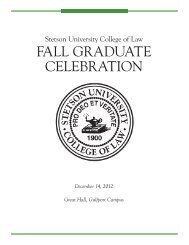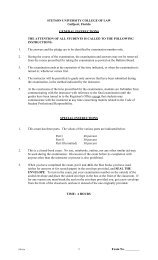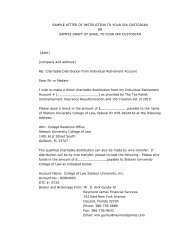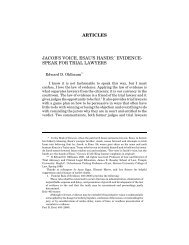the evolution of post-penetration rape law - Stetson University ...
the evolution of post-penetration rape law - Stetson University ...
the evolution of post-penetration rape law - Stetson University ...
You also want an ePaper? Increase the reach of your titles
YUMPU automatically turns print PDFs into web optimized ePapers that Google loves.
File: Davis.343.GALLEY(7) Created on: 6/2/2005 9:33 AM Last Printed: 7/7/2005 2:54 PM736 <strong>Stetson</strong> Law Review [Vol. 34without interruption <strong>of</strong> <strong>penetration</strong>. 48 The jury asked <strong>the</strong> trialcourt judge whe<strong>the</strong>r a <strong>rape</strong> occurs when a female is forced to continueintercourse after revoking willingly given consent. 49 Thetrial court first answered in <strong>the</strong> affirmative and <strong>the</strong>n amended itsanswer to state, “[W]e do not have a definitive answer to thatquestion.” 50 The jury returned a guilty verdict. 51 On appeal, <strong>the</strong>Vela court held that it was not <strong>rape</strong> when <strong>the</strong> defendant forciblycompelled <strong>the</strong> victim to continue initially consensual intercourseagainst her will. 52 The court provided several reasons for its holding.First, <strong>the</strong> court referred to <strong>the</strong> California Penal Code, whichdefines <strong>rape</strong> as nonconsensual sexual intercourse in which “[a]ny<strong>penetration</strong>, however slight, is sufficient to complete <strong>the</strong> crime.” 53Relying on that statutory definition and <strong>the</strong> Way and Battle holdings,<strong>the</strong> court found that initial <strong>penetration</strong> is “<strong>the</strong> crucial point”at which <strong>the</strong> crime <strong>of</strong> <strong>rape</strong> is completed. 54 Therefore, a <strong>rape</strong> didnot occur if <strong>the</strong> victim revoked consent following <strong>penetration</strong>, buteach subsequent act <strong>of</strong> <strong>penetration</strong>, accompanied by <strong>the</strong> o<strong>the</strong>relements <strong>of</strong> <strong>rape</strong>, could complete <strong>the</strong> crime. 55 Second, <strong>the</strong> courtmade reference to <strong>the</strong> following language in <strong>the</strong> Penal Code: “[t]heessential guilt <strong>of</strong> <strong>rape</strong> consists in <strong>the</strong> outrage to <strong>the</strong> person andfeelings <strong>of</strong> <strong>the</strong> female.” 56 That language prompted <strong>the</strong> court topromulgate <strong>the</strong> <strong>the</strong>ory that <strong>the</strong> essential guilt <strong>of</strong> <strong>rape</strong>—causing<strong>the</strong> female outrage—is lacking in a revoked-consent case. 57 Thecourt set forth its <strong>the</strong>ory with <strong>the</strong> following language:When a female willingly consents to an act <strong>of</strong> sexual intercourse,<strong>the</strong> <strong>penetration</strong> by <strong>the</strong> male cannot constitute a violation<strong>of</strong> her womanhood nor cause outrage to her personand feelings. If she withdraws consent during <strong>the</strong> act <strong>of</strong> sexualintercourse and <strong>the</strong> male forcibly continues <strong>the</strong> act withoutinterruption, <strong>the</strong> female may certainly feel outrage be-48. Id. The court did not specify how <strong>the</strong> victim communicated her revocation <strong>of</strong> consentor in what manner <strong>the</strong> defendant compelled her to continue intercourse.49. Id. at 162–163.50. Id. at 163.51. Id.52. Id. at 165.53. Id. at 164 (citing Cal. Penal Code Ann. § 263 (West 1984)).54. Id. at 163–164 (relying on Battle, 414 A.2d at 1270; Way, 254 S.E.2d at 762).55. Id. at 165.56. Id. at 164–165 (citing Cal. Penal Code Ann. § 263 (West 1970)).57. Id. at 165.


